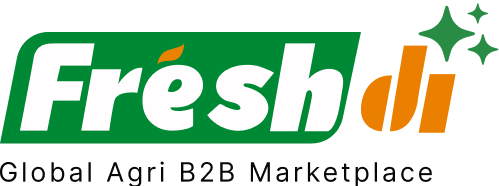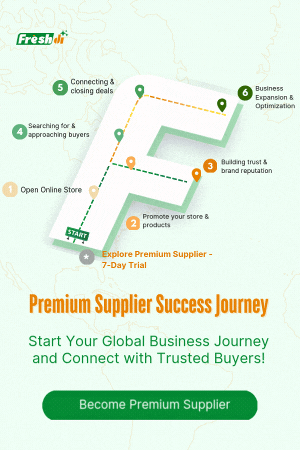Introduction – Current State of Play: The Spices Powder Sector in United States
The Spices Powder market in the United States is heating up—literally and figuratively. With ever-evolving culinary tastes, health-focused lifestyles, and sudden geopolitical shifts, the spice industry is in the middle of a whirlwind. Recent trade agreements have opened up new sourcing opportunities, while climate-induced disruptions in Asia and Africa are pushing both buyers and suppliers to rethink their strategies.
At the same time, inflation, regulatory updates from the FDA, and skyrocketing demand for clean-label products are reshaping the way spice powder is produced, packaged, and delivered. Businesses in the U.S. now face a fast-paced, high-stakes environment where agility, insight, and verified partnerships are more important than ever.
Platforms like Freshdi are becoming invaluable, offering real-time supplier verification, RFQ (Request For Quote) trend tracking, and dynamic sourcing intelligence to navigate this spicy terrain.
Deep Dive – Market Movers: Recent Developments and Consequences
Let’s take a closer look at the ripples rocking the spices powder pond in the U.S.
1. Surge in Demand for Global Flavors:
Americans are embracing international cuisine like never before. Whether it’s the warmth of Indian garam masala or the smoky punch of Mexican chipotle powder, consumers want more variety—and they want it fast.
2. Health Is Spicing Things Up:
Turmeric, ginger, cinnamon—these aren’t just spices anymore; they’re superfoods. Health-conscious buyers are driving up demand for organic, non-GMO, and sustainably sourced spice powders.
3. E-Commerce Boom:
Online grocery shopping is no longer a novelty. In 2023, it accounted for 22% of total grocery sales in the U.S., and spice powders were a big part of that growth. Subscription boxes, DTC (direct-to-consumer) models, and marketplace retailers like Amazon have changed the game.
4. Supply Chain Shocks:
Extreme weather in India and political instability in parts of Africa have caused major hiccups in spice production, impacting availability and pricing in the U.S.
5. Regulatory Tightening:
The FDA has ramped up enforcement, particularly around food safety and labeling, making it tougher for smaller players to comply.
6. Product Innovation:
Blends tailored to trending diets (think keto or Mediterranean) and ready-to-use premixes are gaining traction. Brands that innovate are winning shelf space.
Top 8 Verified Spices Powder Suppliers in United States – Navigating Current Market Realities
These suppliers have been selected based on verified credentials, buyer feedback, export capability, and performance on Freshdi.
-
Ekobandz Wholesale
Known for their broad range of ethnic spice powders, Ekobandz offers flexible MOQs and quick shipping across the U.S. They specialize in African and Caribbean spice blends. -
Wright Kigame
A trusted name in organically sourced spice powders, Wright Kigame is widely praised for their turmeric, black pepper, and chili powder varieties. -
Sarasi
Sarasi is known for its premium-grade South Asian spice powders. Their cumin and coriander powders are top-rated among buyers on Freshdi. -
Zain Shabbir
With a focus on clean labeling and HACCP-certified operations, Zain Shabbir is ideal for businesses sourcing for the organic and wellness segment. -
Premierbiz
Premierbiz stands out for their large-scale B2B supply capabilities and advanced packaging options, including nitrogen-flushed packs for extended shelf life. -
Ulidity Distributors
If you need bulk quantities fast, Ulidity is your go-to. They’re known for their logistics efficiency and wide product catalog. -
All People Food LLC
A rising star in the spice powder scene, they focus on transparency, fair-trade sourcing, and traceability—all verified on Freshdi. -
Pavana Llc
Pavana specializes in spice powders for foodservice and retail sectors, including private label options that are increasingly in demand.
Dynamic Ranking Note:
Keep in mind that Freshdi updates its supplier rankings regularly through initiatives like “Suppliers of the Month/Quarter,” which reflect real-time performance and buyer engagement.
Market Navigation – Strategic Responses to The Prevailing Spices Powder Landscape in United States
Things are moving fast, and if you’re in the game, you need to move faster.
Opportunities Worth Grabbing:
-
Ethnic Cuisine = Big Business:
Dive into spice powders that cater to Mexican, Indian, Middle Eastern, and African cuisines. These categories are booming in both foodservice and retail. -
Health Halo Products:
Think beyond flavor. Promote the anti-inflammatory, digestive, or antioxidant benefits of spices like turmeric, cinnamon, and ginger. -
E-Commerce-First Strategy:
Consider launching a DTC spice brand. Freshdi data shows that buyers are increasingly sourcing from suppliers with a strong digital footprint and fulfillment capabilities.
Challenges to Watch Out For:
-
Supply Chain Fragility:
With India and Sri Lanka facing erratic weather, reliance on single-origin sourcing is risky. Diversify your supplier base now. -
Regulatory Headaches:
Make sure your suppliers are FDA-compliant. Third-party testing, allergen declarations, and traceability are must-haves. -
Adulteration Risks:
Fraudulent spice powders are still a threat. Partner only with verified and traceable suppliers—Freshdi can help with that.
Smart Sourcing Strategies:
-
Mix Local and Global:
Blend imported spices with U.S.-processed packaging to reduce lead times and add a “locally packed” label. -
Invest in Tech:
Use blockchain or QR-based traceability to reassure your buyers and meet regulatory standards. -
Go Green:
Sustainable packaging and fair-trade certification are no longer optional—they’re expected by today’s conscious consumers.
Short-Term Outlook:
The U.S. spice powder sector is projected to hit $2.7 billion by 2035. But the next year or two will be defined by agility—those who can pivot quickly based on supply chain shifts, consumer trends, and regulation changes will come out on top.
Conclusion – Key Takeaways for Businesses in a Dynamic Market
So, what’s the final word on the U.S. spice powder market?
- Demand is hot and rising, especially in global flavors, health-focused products, and online sales.
- Challenges are real—from climate-hit supply chains to stricter FDA rules and counterfeit concerns.
- Opportunities abound for businesses that can act fast, think smart, and source wisely.
The key is to stay informed and agile. Platforms like Freshdi are essential allies in this journey—offering verified supplier data, RFQ trend insights tied to current events, and dynamic rankings to highlight top-performing partners you can trust.
Whether you’re starting a new private label spice line or scaling up your foodservice offerings, Freshdi ensures you’re always a step ahead in this spicy race.
Key Takeaways Checklist for Spice Powder Buyers
- ✅ Prioritize verified suppliers with traceability
- ✅ Diversify sourcing to mitigate climate and geopolitical risks
- ✅ Align with trending cuisines and health-conscious products
- ✅ Invest in digital infrastructure and e-commerce capabilities
- ✅ Stay on top of FDA and food safety compliance
- ✅ Monitor Freshdi’s dynamic supplier rankings regularly
Future Outlook – What’s Next for the U.S. Spice Powder Market?
- Expect increased automation and AI integration in spice processing and packaging.
- Blockchain traceability could become standard in premium spice segments.
- Sustainable farming and fair-trade practices will shape buying decisions.
- Direct sourcing relationships will gain popularity over traditional import models.
- Personalized spice blends tailored to dietary preferences will become a major trend.
How Freshdi Empowers Buyers in the Spice Powder Market
- 📈 Real-Time Market Insights: Stay updated with data-driven trends and buyer behaviors.
- 🛠️ Verified Supplier Profiles: Access trustworthy, well-reviewed spice powder suppliers.
- 📦 RFQ Management: Track and respond to shifting RFQ volumes tied to market trends.
- 🔔 News-Based Notifications: Get alerts when events impact your sourcing regions.
- 🌐 Global + Local Reach: Connect with U.S. and international suppliers in one place.
FAQs
1. What are the most in-demand spice powders in the U.S. right now?
Turmeric, cumin, chili powder, and ginger are leading the charts, especially among health-conscious and ethnically diverse consumers.
2. How can I ensure my spice supplier in the U.S. is reliable?
Use platforms like Freshdi to verify certifications, check buyer reviews, and assess export performance.
3. Are spice powders affected by climate change?
Yes, major spice-producing countries are experiencing weather disruptions, affecting yield and pricing. Diversified sourcing is key.
4. What certifications should I look for when buying spices?
Look for FDA compliance, HACCP, USDA Organic, Fair Trade, and ISO certifications depending on your market needs.
5. Can I find private label spice suppliers in the U.S.?
Absolutely. Many suppliers like Pavana LLC offer private labeling options tailored to retail and foodservice.
Stay spicy, stay smart—and let platforms like Freshdi keep your sourcing strategy flavorful and future-ready.


